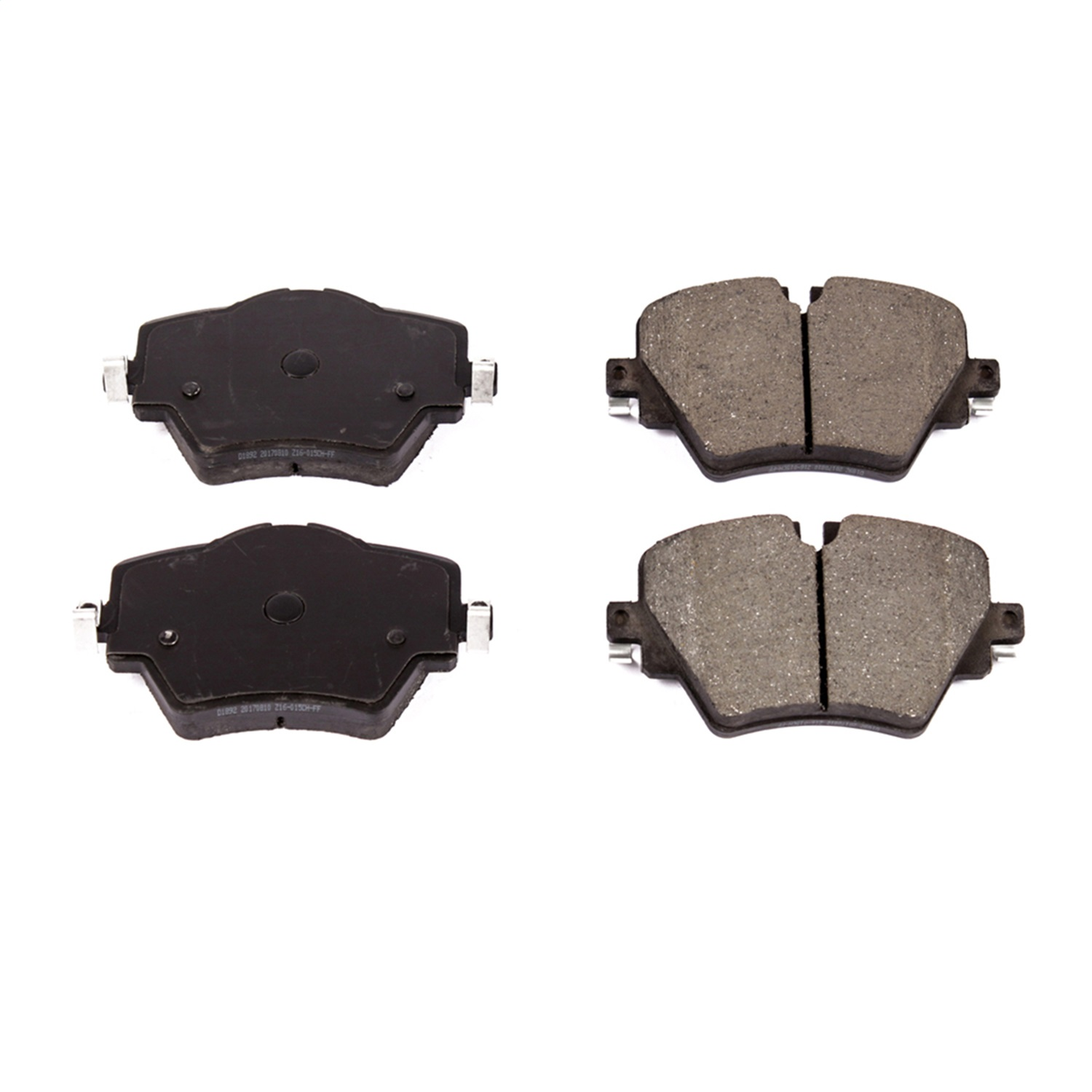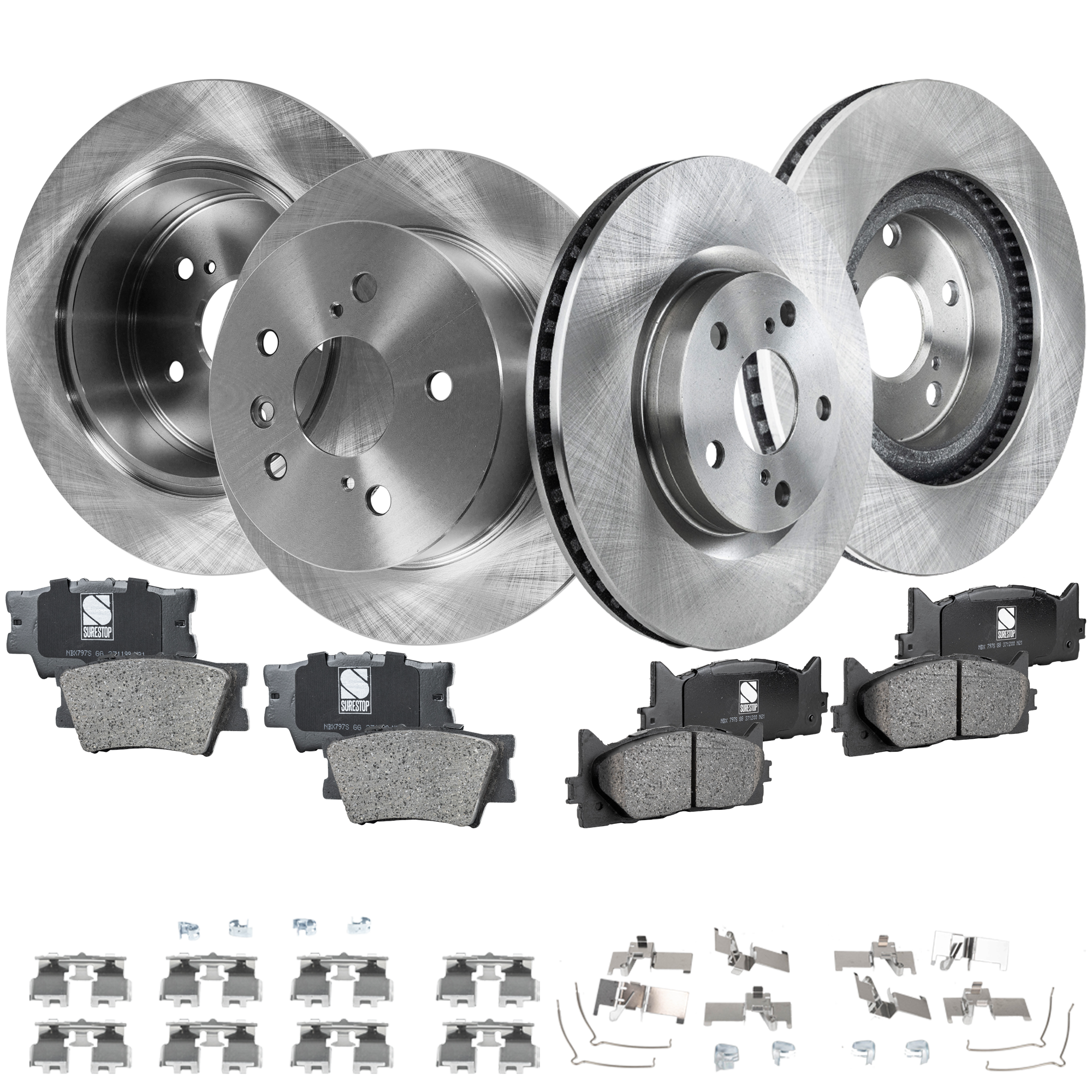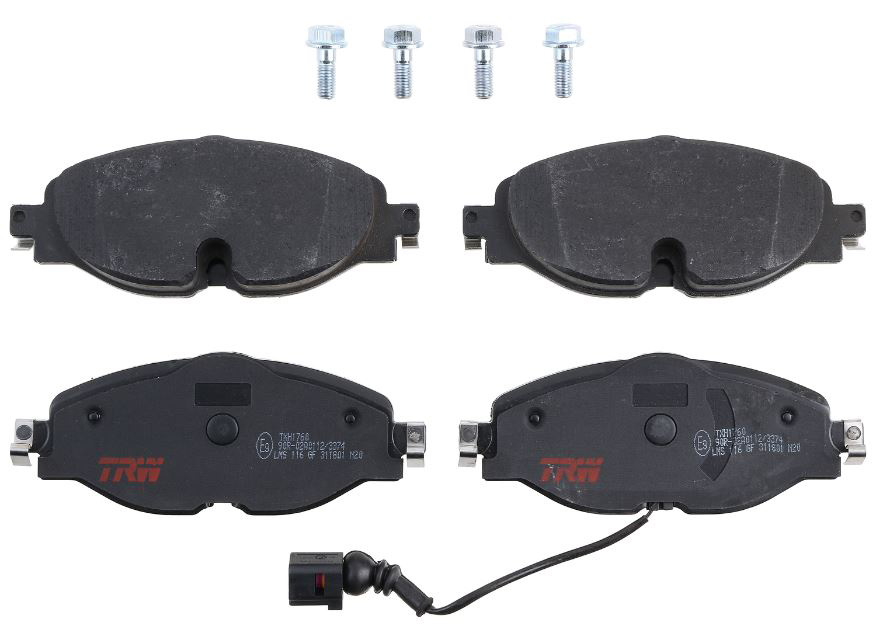Brake pad replacement is usually one of the easier automotive repairs. Many people attempt it shortly after learning how to perform other basic tasks, such as changing engine oil.
But that’s not to say brake pad replacement should be taken lightly. Your vehicle will be unsafe if the job is done incorrectly. Don’t take any chances unless you’re 100% sure you know what you’re doing.
Front Brake Pad Replacement Costs
If you decide to have a professional replace your brake pads, which is a smart move if you’re uncertain of your mechanical prowess, expect to pay anywhere from $200-$500. The job can be even more costly if you have a high-end luxury or performance car.
Should you decide to tackle the job yourself, expect to pay anywhere from $10 to around $100 for a new set of pads. Keep in mind that most professionals recommend either replacing or resurfacing your brake rotors when new pads are installed. Check out our brake rotor replacement article for more information.

What Tools Do You Need to Replace Your Front Brake Pads?
The tools needed to replace a set of front brake pads vary, depending on what type of car you have. But, in general, you’ll need:
- Brake fluid
- Breaker bar
- C-clamp or disc brake spreader
- Fluid extractor or oil suction gun
- Jack and jack stands
- Large screwdriver or pry bar
- Ratchet and appropriate size sockets (some calipers may require a Torx or Allen head-style socket)
- Safety glasses
- Torque wrench
- Wheel chocks
Should You Do the Job Yourself?
We’re talking about your brakes here. If you have any doubts about tackling the job, don’t do it yourself. Let a professional complete the work instead.
On the other hand, if you’re savvy with a wrench, brake pad replacement is usually a fairly simple task.
Front Brake Pad Replacement
Now we get to the fun part: brake pad replacement. Are you ready to grab a wrench and get dirty? Good.
Before we start, however, keep in mind that all vehicles are different. Be sure to follow the repair information for your specific application. Repair manuals, such as those from Chilton, are useful but an ALLDATA subscription is even better. ALLDATA has single-vehicle subscriptions for DIYers that provide detailed factory repair information.
Note: The following is a general guide for educational and entertainment purposes only. Consult your vehicle’s factory information for specific repair instructions and recommended safety precautions.

Removal
1. Put on your safety glasses.
2. Use a breaker bar to loosen the wheel lug nuts. Do not remove the nuts completely at this time.
3. Safely raise and support the vehicle using a jack and jack stands. Chock the rear wheels and set the parking brake.
4. Remove the lug nuts by hand. Then remove the wheel and tire assembly.
5. Remove the caliper mounting bolts. Do NOT unbolt the brake hose going to the caliper. You’ll let air into the hydraulic system if you do.
6. Free the caliper by pulling it up and away from the rotor. If the caliper is stubborn, you may need to use a large screwdriver or pry bar to help free it.
7. Rest the caliper on the steering knuckle or another sturdy suspension component. Do not allow the caliper to dangle from the brake hose. Doing so may result in damage.
8. Remove the brake pads from the caliper. Keep track of any retaining clips, springs, or other hardware used to hold the pads in place.
Installation
1. Compare the new brake pads to the old brake pads to be sure both are the same design.
2. To ensure the new, thicker pads will fit, use a C-clamp or disc brake spreader to push the caliper piston back in its bore. When doing this, keep an eye on the master cylinder to ensure the fluid doesn’t get pushed out of the reservoir.
If necessary, remove a small amount of fluid from the reservoir using a suction gun or fluid extractor. Do not remove all of the fluid from the master cylinder—that will allow air to enter the hydraulic system.
3. Apply a light coat of disc brake lubricant (never any other type of grease) to the backside of the brake pads. You only need to apply lubricant at the points where the pad touches the caliper. Also, if your car has floating-style calipers, it’s a good idea to lube the slider pins. Never apply lubricant to the friction material on the front side of the pad.
4. Install the brake pads into the brake caliper along with any hardware that was removed. If new hardware is included with the pads, use that in place of the old hardware.
5. Position the caliper over the rotor.
6. Tighten down the caliper mounting bolts and use a torque wrench to tighten them to the manufacturer’s specifications.
7. Top off the master cylinder reservoir if you extracted fluid during step #2.
8. Reinstall the wheel/tire assembly on the lug nuts.
9. Using a ratchet and socket, tighten the lug nuts until they’re snug.
10. Safely remove the jack stands and lower the vehicle.
11. Use a torque wrench to tighten the lug nuts to the manufacturer’s specifications.
12. Warning: Before driving the vehicle or taking the automatic transmission out of park, pump the brakes several times to ensure they feel firm. Your car will have little to no braking ability until the brakes are pumped, allowing the caliper piston to return to its original position.
First, pump the brakes with the engine off. Then start the engine (automatic transmission in park and the emergency brake set) and pump the brakes again. DO NOT drive the car until the brakes feel solid.
13. Drive the vehicle and follow the break-in procedure recommended by the pad manufacturer.
Here’s a tutorial video on how to replace your Ford F-150 front brake pads:
Front Brake Pad Replacement Tips
You should replace any damaged or corroded hardware found during your brake job. Hardware kits are available, in case your replacement pads did not come with new hardware.
Also, as previously mentioned, you’ll want to either replace or resurface the rotors at the same time you replace your brake pads. Since rotor resurfacing requires a professional (and expensive) brake lathe, replacement is usually the best choice for a DIYer. Check out our brake rotor replacement article for related information.
Where to Get Quality Brake Pads
Replacing faulty brake pads isn’t an optional repair. Brake pads are essential for proper braking, so leaving faulty brake pads in place is far too risky. Maybe you’re looking to repair the brake pads yourself, or you want to buy a new set of brake pads for a professional to install. Either way, CarParts.com has you covered.
The easy-to-navigate CarParts.com website makes shopping for parts online as convenient as possible. We have a built-in vehicle selector to guarantee that the parts you choose will fit your vehicle’s exact make and model. We also offer quality aftermarket brake pads at different price points to suit your budget. It takes only a few quick clicks to get to our convenient and secure checkout. Once you order, we’ll ship your new brake pads straight to your doorstep in as fast as two business days.
Don’t delay repairs when it comes to your brake system. Order a new brake pad set at CarParts.com today.
Shop this Project



Any information provided on this Website is for informational purposes only and is not intended to replace consultation with a professional mechanic. The accuracy and timeliness of the information may change from the time of publication.
































